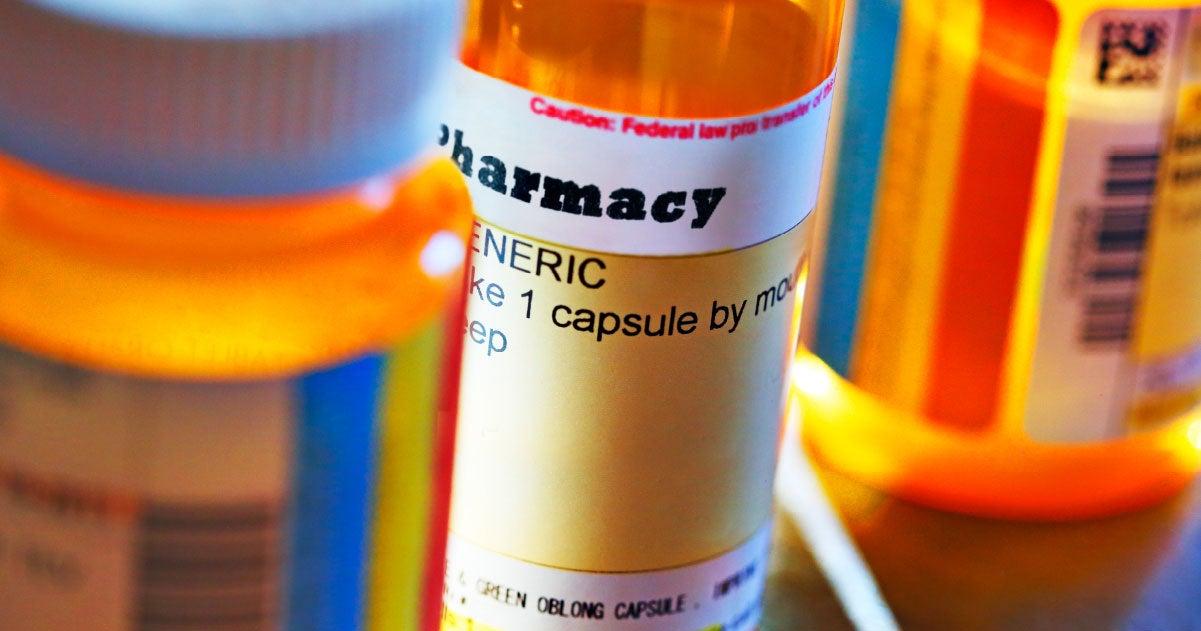
“How much can I expect to pay out of pocket for Medicare coverage?”
It’s something you might be wondering if you’re age 65+ or about to turn 65. Medicare expenses are a big concern for many older adults, especially those on a fixed or limited income. The first step to understanding Medicare's out-of-pocket (OOP) costs is to define what "out of pocket" means.
"Medicare out-of-pocket costs can and usually do change annually, just like your health needs," said Ryan Ramsey, NCOA's Associate Director of Health Coverage and Benefits. "By understanding these costs, you can more effectively plan for your health care priorities, manage your budget, and prepare for future medical expenses. All of this helps you avoid the stress of unexpected costs."
What is a Medicare out-of-pocket cost?
An out-of-pocket cost is the amount you will pay beyond what Medicare covers. You are responsible for part of your medical bill after Medicare kicks in to pay their share. What you'll pay in out-of-pocket costs in 2026 will vary based on the coverage you have, what providers you visit, and the services you receive. Certain costs, such as Part B premiums, may depend on how much income you make each year.
What do average Medicare out-of-pocket expenses look like?
Below are some basic Medicare out-of-pocket costs you can expect to pay with various plans. Additional OOP expenses depend on your plan’s coverage and other factors.
- Medicare Part A (Hospital Insurance): Most people don’t have to pay a premium for Part A because they have worked 10+ years and had Social Security taxes withheld. If you don’t get premium-free Part A, you may pay up to $565 monthly in premiums. For a hospital stay in 2026, you’ll also pay a $1,736 deductible per benefit period.
- Medicare Part B (Medical Insurance): The standard Part B monthly premium in 2026 is $202.90. Most beneficiaries pay this amount. The Part B annual deductible is $283 per year. Part B coinsurance—the share you're expected to pay after reaching your deductible—is 20% of the cost for each Medicare-approved service or item. This can make up a significant part of your total out-of-pocket costs.
- Medicare Advantage (Part C): Part C plans cover everything original Medicare covers, and most provide extra benefits such as dental, hearing, and vision care. In 2026, the average monthly Medicare Advantage/Part C premiums will decrease to $14.00, down from $16.40 in 2025. Most Medicare Advantage plans have cost sharing as well. Typically, this is in the form of a fixed co-payment for doctor's visits (rather than the 20% coinsurance you pay with Part B).
- Medicare Part D (Prescription Drug Coverage): Annual premiums vary across Part D plans. The average stand-alone Part D plan total premium is projected to decrease to $34.50 in 2026 (down $3.81 from 2025). The average Part D total premium for Medicare Advantage plans with prescription drug coverage is projected to decrease to $11.50 in 2026 (down $1.82 from 2025). The Part D deductible can be no more than $615 per year. In 2026, annual out-of-pocket Part D costs will increase from $2,000 to $2,100. If you take high-cost medications covered by Part D, you could see major savings. After meeting the out-of-pocket limit, you pay $0 for covered drugs for the rest of the year. Older adults with incomes up to 150% of the federal poverty level (FPL) qualify for the Medicare Part D Low-Income Subsidy (LIS, or “Extra Help”). This program lowers premiums and out-of-pocket costs for prescription drugs.
- Medigap (Supplemental Insurance): Medigap policies are sold by private carriers to provide wraparound coverage for Medicare Parts A and B costs. Each insurance carrier sets its own premium for its Medigap policies. The way they set the price determines how much you’ll pay in out-of-pocket costs, now and for the rest of your coverage period. Some Medigap plans have deductibles, while others do not. In 2026, the annual deductible amount for Medigap plans F, G, and J is $2,950.
How does a deductible work?
The Medicare deductible is the annual amount you pay for covered health care services before your Medicare plan starts to pay. Once you've satisfied your deductible, you'll typically only pay a copayment or coinsurance—and Medicare pays the rest. For instance, a hospital stay in 2026 that’s covered under Medicare Part A will cost you $1,736 before Medicare coverage takes effect. Some Medicare Advantage plans have no deductible; however, these plans will likely cost you more in monthly premiums.
What is the Medicare out-of-pocket maximum?
The Medicare out-of-pocket maximum is the annual cap on your out-of-pocket health care costs. This is known as the maximum out-of-pocket (MOOP) limit. Once you reach this limit, you will not be responsible for cost sharing (deductibles, coinsurance, and copayments) on covered services for the rest of the year. Your MOOP then resets annually. The goal of the MOOP is to protect you from the burden of excessive, out-of-control medical costs that may result from a serious or ongoing health issue.
It's important to know that the Medicare out-of-pocket maximum does not apply to original Medicare (Parts A and B), which has no annual OOP limit. It only applies to Medicare Advantage plans. The MOOP also applies to Medigap policies.
For 2026, out-of-pocket maximums for Medicare Advantage and Medigap plans are as follows:
- Medicare Advantage (Part C): In 2026, the out-of-pocket maximum for Part C plans will decrease by $100 to $9,250 for approved services, but individual plans can set lower limits if they wish. Part D cost sharing does not apply toward your Medicare Advantage plan’s MOOP.
- Medigap (Supplemental Insurance): The 2026 out-of-pocket maximum for Medigap plan K is $8,000. For Medigap plan L, the MOOP is $4,000. After you reach these limits, the plan will pay 100% of your costs for approved services for the remainder of the year.
Starting in 2025, all Part D and Medicare Advantage plans will have a $2,000 annual cap on out-of-pocket prescription drug costs (this cap was previously $8,000). Once you hit this threshold, your costs for covered prescriptions will be $0 for the rest of the year.
2026 Medicare Out-of-Pocket Costs at a Glance
|
Medicare Plan |
2026 Medicare Out-of-Pocket Costs |
|---|---|
|
Part A (Hospital Insurance) |
Premium: $0 for most people; otherwise $311 or $565/mo. Deductible: $1,736 for each inpatient hospital benefit period Coinsurance: Varies with location and length of stay. For a hospital stay:
Skilled nursing facility daily coinsurance (days 21-100): $217 *These are called "lifetime reserve days" because Medicare will only pay for these extra days once in your lifetime. |
|
Part B (Medical Insurance) |
Premium: $202.90/mo. or higher, depending on income Deductible: $283 annually Coinsurance: 20% of service costs; deductible must be met first Out-of-pocket maximum: None Preventive benefits: There are some preventive services under Part B that Medicare covers at 100%. |
|
Part C (Medicare Advantage) |
Premium: Varies by plan; the average basic monthly premium is estimated to be about $14/mo. in 2026 Deductible: Varies by plan, may include Part D deductible Coinsurance: Varies by plan and service(s) received Out-of-pocket maximum: $9,250, but some Part C plans set lower limits |
|
Part D (Prescription Drug Coverage) |
Premium: Varies by plan; the average basic monthly premium for a stand-alone Part D plan is estimated to be about $34.50/mo. in 2026 Deductible: Varies by plan, but no more than $615 per year Coinsurance: Varies by plan Out-of-pocket maximum: None, but catastrophic coverage kicks in after you hit $2,100 in out-of-pocket costs for covered drugs |
|
Medigap (Supplemental Insurance) |
Premium: Varies by plan Deductible: $2,950 for high-deductible options F, G, and J Coinsurance: Varies by plan Out-of-pocket maximum: OOP maximums for Medigap Plans K and L are $8,000 and $4,000, respectively |
Get trustworthy advice on choosing a Medicare plan
Medicare is not free, and out-of-pocket costs are a major consideration when choosing coverage. That’s why it’s important to take the time to understand all the options available to you. For expert guidance in selecting a plan, you can:
- Contact your State Health Insurance Assistance Program (SHIP).
- If you live in California, Illinois, Michigan, and Ohio, NCOA has an online decision support tool for people who are dual-eligible (eligible for both Medicare and Medicaid). My Care, My Choice is a resource that can help you understand your Medicare and Medicaid coverage options and how the two programs work together. Visit the website and click on your state to get started.
- Call 1-800-MEDICARE (1-800-633-4227) to talk with a customer support representative about your Medicare questions and concerns—or visit the Medicare.gov website to start a live chat. TTY users should call 1-877-486-2048. The Medicare Support Hotline is available 24/7, except for some federal holidays.




